 |
The American Accordionists’ Association turns 80!!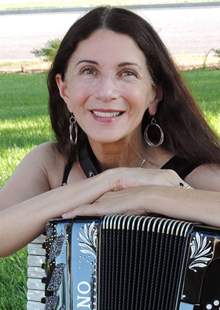 In March of 2018, the American Accordionists’ Association (AAA) will turn 80 years old. We hope to see all of you this summer in beautiful Alexandria, Virginia, where we will celebrate this special milestone! As the organization’s historian, I will be writing monthly articles on events that led up to the creation of the AAA, some of its influential members, as well as special events throughout the decades, and more. In March of 2018, the American Accordionists’ Association (AAA) will turn 80 years old. We hope to see all of you this summer in beautiful Alexandria, Virginia, where we will celebrate this special milestone! As the organization’s historian, I will be writing monthly articles on events that led up to the creation of the AAA, some of its influential members, as well as special events throughout the decades, and more. |
| Joan Grauman, AAA Historian |
|
Gentle
Giant of the Accordion World
Dr. Carmelo Pino By Joan Grauman, AAA Historian |
|
With contributions by Stella Allison, Tomasczek Bednarek, Manny Bobenrieth, Faithe Deffner, Dr. Helmi Harrington, Linda Soley Reed and Joan Singer. I would like to extend special thanks to two people: Carmelo's wife, Ellen Pino, for providing personal photos, documents, and memorabilia, and Lou Coppola for sharing his photos of AAA events spanning several decades. This article was written for the AAA Festival Journal 2008 which was the 70th Anniversary of the AAA. You can download the pdf of this AAA article. Dr. Carmelo Pino passed away in 2013 from Alzheimers. This is a tribute to my treasured friend and accordion teacher, Dr. Carmelo Pino. Although I studied with Carmelo for only one year, what I gained from his guidance is immeasurable. He molded me into a better musician and a more confident teacher, while keeping me entertained with his delightful humor and with fascinating stories of his life as a celebrated accordionist and composer. 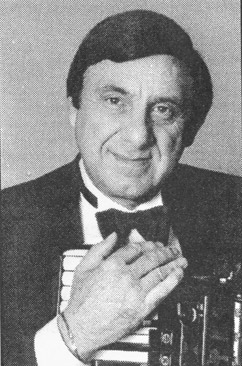 The
Early Years The
Early Years Carmelo Pino, Jr. was born in the coal mining town of Kilsyth, West Virginia on October 25, 1934. Kilsyth was a small, picturesque community of predominately Italian immigrants. The youngest of five children, Carmelo's earliest memories are of a very happy, nurturing home filled with music. His father played guitar, one brother played the clarinet, the other played violin, and his two sisters sang in harmony. The community held weekly dances where his family would play and sing with other local musicians. The young Carmelo would sit at his father's feet absorbing the sounds of the guitar as he watched, with fascination, the band's accordionist. As a toddler blessed with a beautiful voice, Carmelo was encouraged to sing with the band, and later as a soloist in his elementary school. 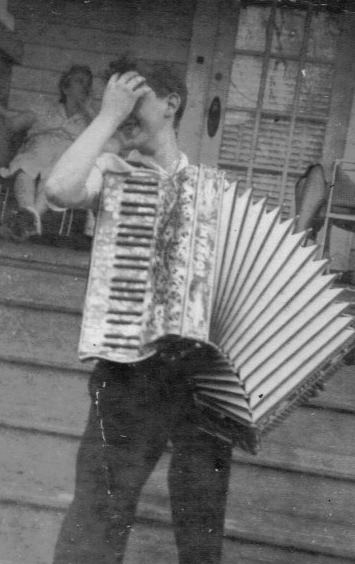 In
1943, Carmelo's father, no longer able to work in the mines due to black
lung disease, moved the family to Washington, DC, where he worked in the
Navy Yard. Carmelo, now nine years old, began studying the accordion with
Columbo Rotelli, a close friend of the Pino family. Carmelo immediately
took to the accordion. In
1943, Carmelo's father, no longer able to work in the mines due to black
lung disease, moved the family to Washington, DC, where he worked in the
Navy Yard. Carmelo, now nine years old, began studying the accordion with
Columbo Rotelli, a close friend of the Pino family. Carmelo immediately
took to the accordion. He remembers his first recital very well. He had been studying for about eight months and had prepared a recital piece. Two days before the recital, he was given the sheet music for Tico Tico. When Carmelo arrived at the studio, he asked if he could play Tico Tico as his recital piece. A shocked Mr. Rotelli pointed out to Carmelo that he didn't even bring his sheet music. "I have it memorized", said the young boy. Carmelo played Tico Tico flawlessly at the recital, . (Note: He has been performing Tico Tico ever since that memorable day. In 2006, he recorded his brilliant, playful arrangement, Tico Tico with an Attitude with a quintet on his CD, "Carmelo, Celebrating the Accordion". By the end of the first year of his accordion studies, Carmelo had decided that he would pursue music as his career. Before long, his musical skills had exceeded those of his teacher. Mr. Rotelli, amazed at his student's talents and creativity, continued to coach Carmelo until he could, as Rotelli encouraged, "study in New York with Charles Magnante". In 1947, when Carmelo was 13 years old, an 18-year old accordionist, named Dick Contino, won first place in the "Horace Heidt/Philip Morris Talent Contest", which was broadcast live on national radio from Fresno, California. Carmelo's family was glued to the radio when it was time for Contino to play. Dick Contino's skills motivated young accordionists all over the country. Carmelo was no exception. It was an exciting day when Contino took the grand prize of $5000 in the finals that were held in Washington, DC on December 12, 1948. Months later, Contino was back in Washington performing at the Capitol Theatre. Carmelo's sister, Penny, took her young brother to this concert to see his "musical idol", an event that Carmelo still vividly recalls as one of the highlights of his childhood. College Years at the Biviano Studio A stellar student and athlete, as well as a fine musician, Carmelo received a full scholarship to Columbia University in New York City at age 17. Charles Magnante was no longer accepting private students, so he recommended that Carmelo study with his brother-in-law, the distinguished accordionist, Joe Biviano. 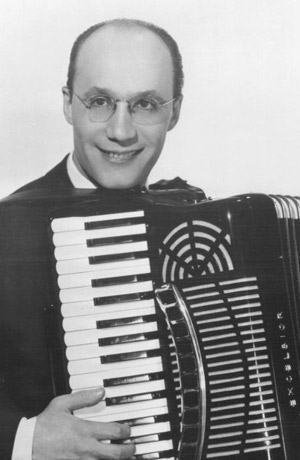 Picture
left: JoeBiviano ca 1948. Biviano was an innovative, motivating teacher,
a fine soloist, and a "mover and shaker" in the accordion world.
He founded the first accordion orchestra, the "Accordion Symphony
Society of New York", was one of the founders of the American Accordionists'
Association in 1938 (as was Charles Magnante), and was staff accordionist
for several of the major broadcasting companies. Picture
left: JoeBiviano ca 1948. Biviano was an innovative, motivating teacher,
a fine soloist, and a "mover and shaker" in the accordion world.
He founded the first accordion orchestra, the "Accordion Symphony
Society of New York", was one of the founders of the American Accordionists'
Association in 1938 (as was Charles Magnante), and was staff accordionist
for several of the major broadcasting companies.Carmelo thrived at the Biviano studio. A strict teacher, Biviano - whom Carmelo describes as his "musical godfather" - required his students to practice four hours daily, which Carmelo did while taking 18 credit hours and working daily in his fraternity's kitchen at Columbia. The atmosphere at the Biviano studio on 48th Street in Manhattan was pure magic in Carmelo's eyes, as it was always filled with students and fine musicians from as far as Canada. It was here that he met Charles Magnante and other well-known accordionists who regularly played for CBS, ABC, NBC, and in Broadway productions. Carmelo befriended Tony Mecca, an excellent musician and fellow student of Biviano's. Tony, the concertmaster, and Carmelo shared a music stand for many years in Joe Biviano's "Accordion Symphony Society of New York", performing regularly to packed houses in the famous New York City Town Hall. 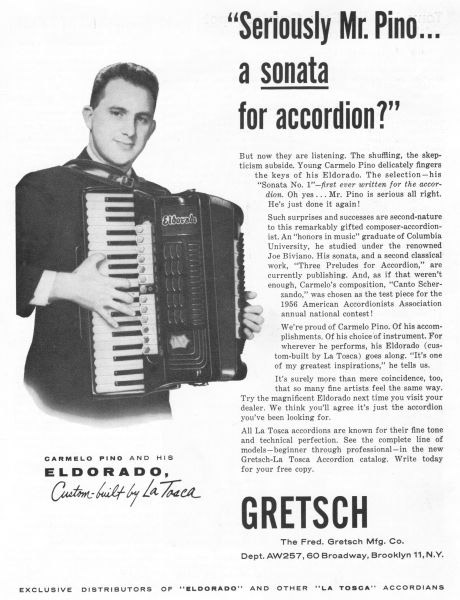 In
his fourth year at Columbia University, Carmelo took a course in music
composition. He loved it, and this course, taught by famous modern composer,
Otto Luening, changed his life. In
his fourth year at Columbia University, Carmelo took a course in music
composition. He loved it, and this course, taught by famous modern composer,
Otto Luening, changed his life. He began to compose modern music for the accordion. Carmelo's first composition, Canto Scherzando, composed in October 1955, a challenging, bright piece in 3/4 time, was chosen by Charles Magnante as the AAA test piece for the U.S. virtuoso championship in the spring of 1956. Johnny LaPadula won that year and went on to win the 1956 Coupe Mondiale. Carmelo premiered Canto Scherzando at Mount Saint Vincent College in New York earlier that year. Shortly thereafter, Carmelo composed Sonata No. 1, subsequently renamed Sonata Moderne. This was the first sonata written for the accordion. Late 1950s to 1965 Within a week of his graduating with a special commendation in music from Columbia, Carmelo accepted a commission as an officer in the U.S. Navy, a position he held for two years. During this time, he continued to compose accordion music. He realized the importance of creating serious music for the accordion, because, in Carmelo's words (quoted from an article he wrote at age 23 for the publication, Accordion and Guitar World), "... no matter how technically perfect an instrument may be, it will artistically be worth only what the music being performed is worth, since the music is the vehicle by which the instrument displays its expressive ability." 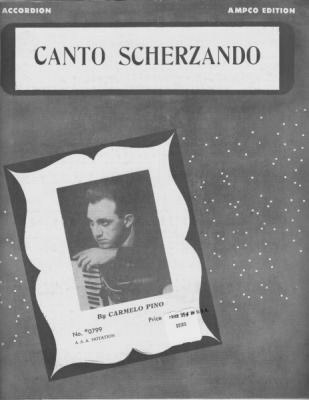 PICTURE 5: Pietro Deiro Publications, 1956
PICTURE 5: Pietro Deiro Publications, 1956 Theresa Costello of O. Pagani Publishers recognized the young composer's talents and went to work publishing and promoting his "modern compositions". O. Pagani featured Carmelo in half-page advertisements in the Accordion and Guitar World magazine, published by John Gerstner, in the late 1950s. Carmelo returned to the Washington, DC area at the end of his Naval commission and opened his music school, "Carmelo Pino's Biviano School of Music" in Silver Spring, Maryland. While raising a family, he taught accordion, conducted accordion ensembles, composed and arranged, and joined the celebrated "Gene Donati Orchestra", playing at events from weddings to the White House. During his 45-year tenure with the Donati orchestra, he performed for every president from Lyndon B. Johnson to George W. Bush. PICTURE 6 below: Carmelo, 1958 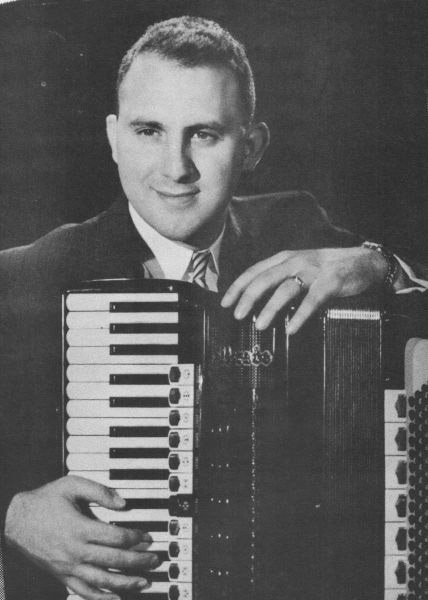
PICTURE 7: Pagani ad, 1958 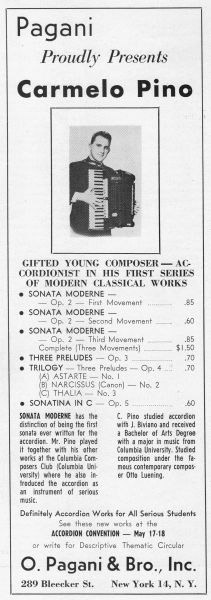
In 1964, Carmelo, along with his good friends and fellow accordion teachers, Lou Coppola and Rose-Marie Coppola, founded the Accordion Association of Metropolitan Washington (AAMW). As its first president, Carmelo encouraged the organization to bring in guest performers, such as Art Van Damme, Maddalena Belfiore, Charles Magnante, and Julie Kasprzyk (Cardona), and to sponsor local competitions for the area's students. This was a thriving organization for many years. In 1978, members of AAMW included 24 accordion teachers from Maryland, Virginia, and Washington, DC. In 1965, the AAA's publication, Accordion Horizons, featured Carmelo in its section called, "Conning the 'Pros'": The United States can be proud of its young generation of accordionists. One of her finest is Carmelo Pino. Carmelo, who is not only active as a composer and instrumentalist (performing both as a soloist and member of the Accordion Symphony Society of N.Y.), is the director of the Biviano School of Music in Washington, D.C. Mr. Pino has just completed a series of performances with the National Symphony Orchestra. On March 26th, 28th, and 29th, Mr. Pino performed with the opera "Natalia Petrovna," an opera in two acts. The program, presented by the Opera Society of Washington, was heard at the Lisner Auditorium, George Washington University. Concert Accordionist with Symphony Orchestras From the early 1960s through 2007, Carmelo played with the National Symphony Orchestra, as well as with many other well-known orchestras, as a soloist, with ensembles, and as an accompanist to famous singers such as Kiri Te Kanawa, Ute Lemper, and the beloved Three Tenors (Jose Carreras, Placido Domingo and Luciano Pavarotti). One of Carmelo's proudest moments was when, after the concert with the Three Tenors, Pavarotti was leaving the stage and paused to put his hand on Carmelo's shoulder. As he faced the audience, there was roaring applause. Carmelo had been chosen for the Three Tenors performance by Pavarotti after a series of successful solo performances in which Carmelo accompanied the famous tenor. PICTURE 8: Carmelo and his beloved Titano "Emperor" with conductor, Placido Domingo 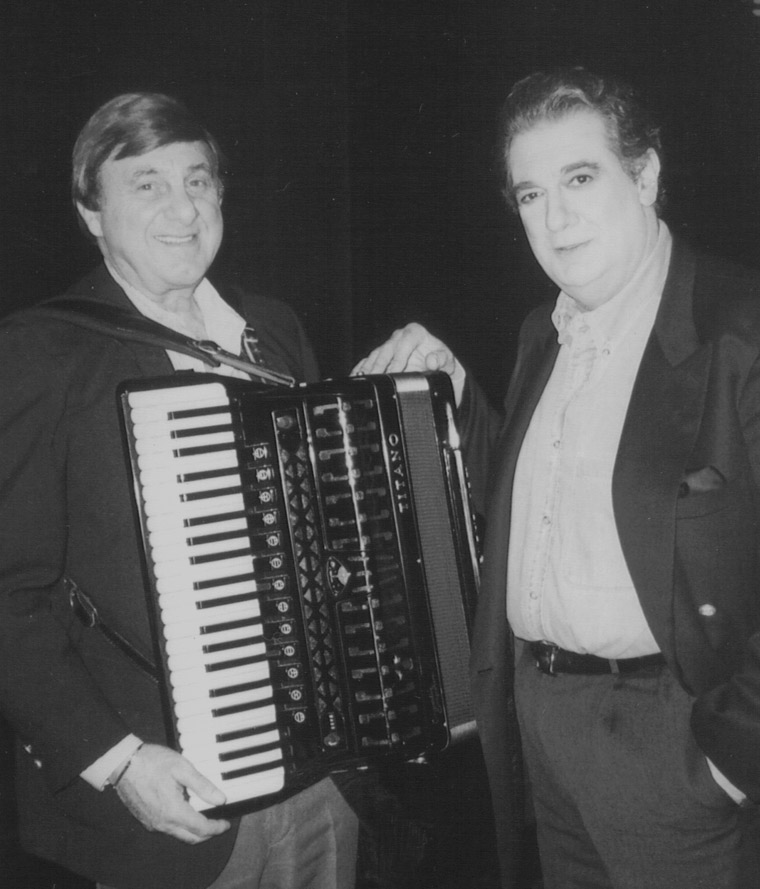
Carmelo worked under the batons of many great conductors. As a concert accordionist with the National Symphony Orchestra alone, he has worked with Leonard Slatkin, Mstislav Rostropovich, James Levine, Antal Dorati, Gunther Schuller, Marvin Hamlisch, Placido Domingo, and many others. Carmelo performed his own award-winning, Concertino for Accordion and Strings on stage at the Kennedy Center 12 times -- four times with the Washington Chamber Symphony and in eight concerts with the National Symphony Orchestra. Concertino for Accordion and Strings This is Carmelo's best known and most celebrated composition. As I mentioned above, it was performed by Carmelo 12 times on the stage of the venerable Kennedy Center in Washington, DC. In 1964, at the first AAA competition for composers, Carmelo took first place for the Concertino for Accordion and Strings. Robert Davine was the first accordionist to perform it with the Denver Symphony Orchestra and later with the Jefferson Symphony Orchestra in Colorado. Carmelo then arranged his concertino for solo accordion with both stradella and free bass (which he had mastered), and published it as Suite for Accordion. This work was chosen as the test piece for the 1969 Coupe Mondiale, which was held at the Hotel Commodore in New York City. PICTURE 9: Suite for Accordion, 1969 Coupe Mondiale test piece 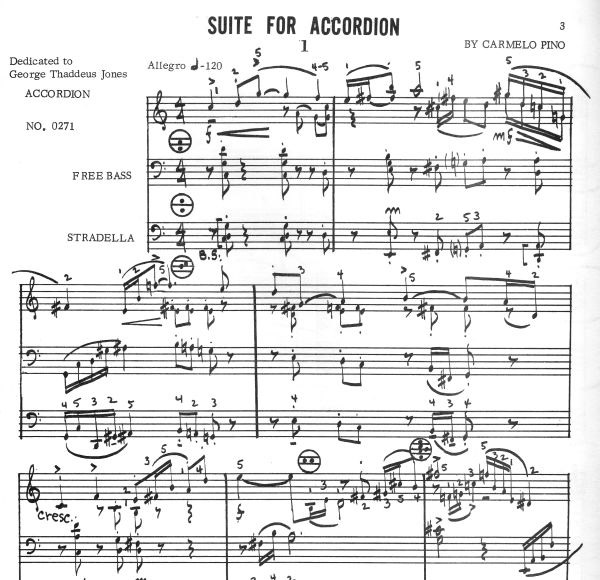
The Concertino for Accordion and Strings was also featured in two performances at the Grand Prix International de L'Accordéon in France. Carmelo was invited to France for this event and proudly sat in the front row to listen as his composition was played by the Ensemble Instrumental de Strasbourg to a sold-out, cheering crowd. The Concertino for Accordion and Strings can be heard, with Carmelo on accordion, on the CD, "Carmelo, Celebrating the Accordion". Affiliation with the American Accordionists' Association Carmelo has been a member of the AAA since the mid-1950s. He has been on its governing board for several decades, has been its vice president for several terms, and its president from 2001 to 2004. He has also been program and competition chairperson, master of ceremonies, adjudicator, and featured performer. He generously shared his knowledge, his music, and his appreciation of his beloved accordion with the masses and was always willing to help others to be successful. As a member of AAA's governing board, he was chosen to co-chair the 1978 Coupe Mondiale along with Maddalena Belfiore. This successful event, which took place in the historic Shoreham-Americana Hotel in Washington, DC, included competitors from 16 countries. PICTURE 10: Carmelo with daughter, Tracy, and Glenna & Joe Biviano, ca. 1970 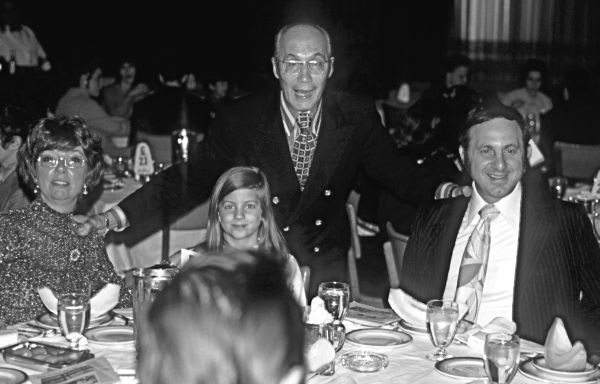
PICTURE 11: Ellen Pino, Jean Carrozza, and Carmelo, 2002 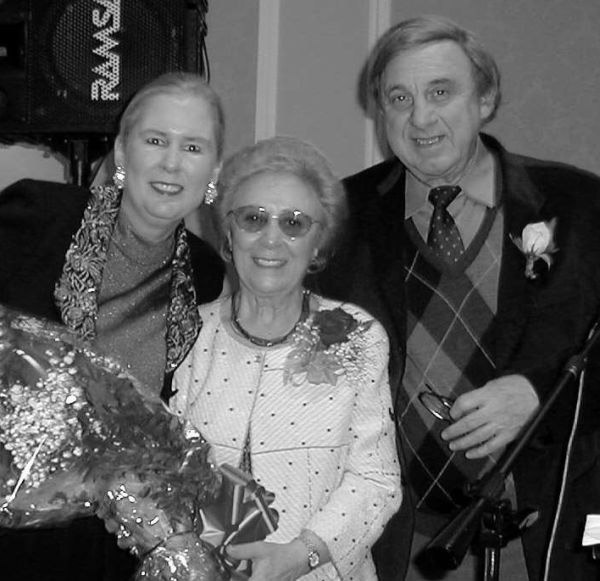
PICTURE 12: Carmen Carrozza & Carmelo Pino, AAA Lifetime Achievement Award dinner for Charles Nunzio, 2004 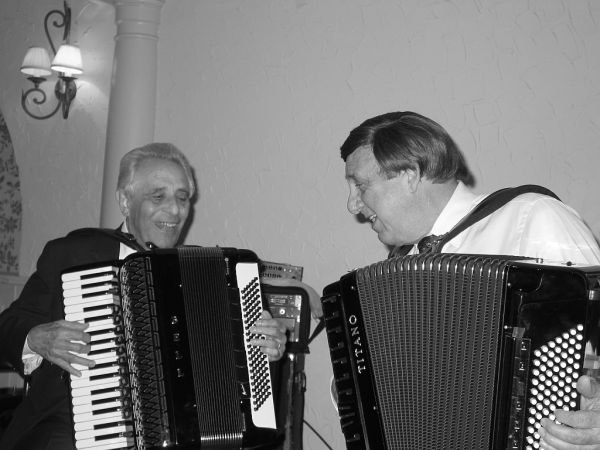 Carmelo felt that there was a need to honor those who gave willingly and tirelessly to the accordion world. He created the "AAA Lifetime Achievement Award" in 2002. The first of these coveted awards went to accordion legend, Carmen Carrozza. Other Career Highlights (with contributions from colleagues and former students) While teaching, performing, touring, and serving in multiple capacities with the AAA and AAMW, Carmelo also earned his Master of Music and Doctor of Musical Arts degrees in composition from the Catholic University of America in Washington, DC. In recent years, he has been honored both by the American Accordion Musicological Society (2003) and by the World of Accordions Museum (2004) for his extraordinary contributions to the accordion world. It is my opinion that one of Carmelo's greatest accomplishments is the musical success of his student, Manny Bobenrieth. Manny, the accordionist for the U.S. Army Strolling Strings, says that Carmelo has always been like a second father, a mentor, and a best friend. He was the kind but firm force guiding Manny from a very young age to be the best musician, performer and arranger that he could be. Here are Manny's words to describe his lifelong association with Carmelo: PICTURE 13: Carmelo with daughter, Marcella, and her duet partner, Manny, with their award, 1972 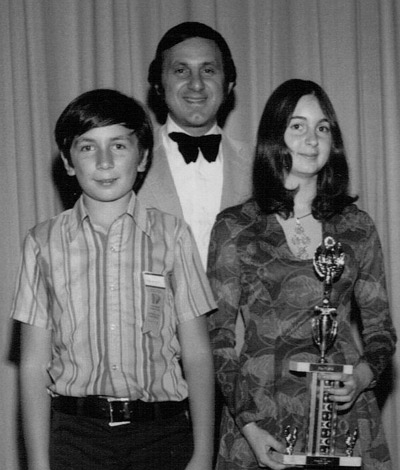
I studied accordion at age 8 through college and beyond. I took lessons weekly at Carmelo's Biviano School of Music. Carmelo encouraged me to enter local and AAA competitions at an early age. I continued to enter competitions all the way through high school. Competitions taught me the art of hard work and operating under pressure. I auditioned to become a music major at Montgomery College in 1976 and was accepted. Carmelo devised an entire curriculum for accordionists wanting to major in music since I was the first. Carmelo came to the college to continue as my teacher. When I moved on to Catholic University, Carmelo moved with me and created their curriculum for accordionists. I received my degree in accordion performance in 1982. In addition to studying classical literature (Foss, Creston, Bach), Carmelo also taught me the art of commercial playing. This included styles, repertoire, commercial harmony and improvisation. He would let me accompany him on band and solo jobs and sit next to him during an evening. I learned how to play with a band, accompany singers, lead a job, and work with strings. His teachings and mentoring are invaluable to me. Manny Bobenrieth PICTURE 14: Carmelo & Manny, 2005 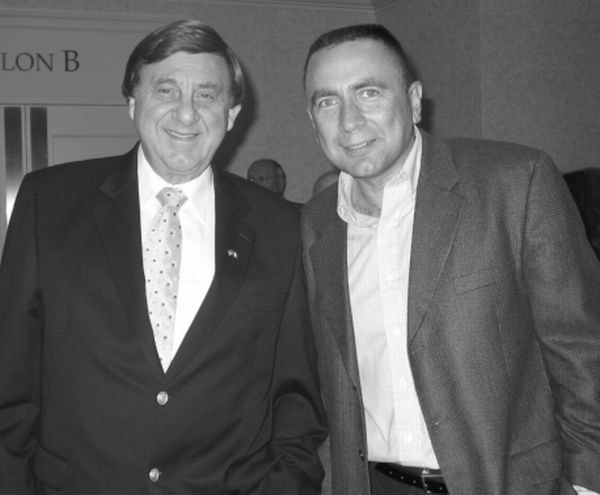
In addition to being highly regarded as a modern composer, Carmelo's solo, ensemble, and orchestral arrangements have been delighting audiences for years. Joan Singer, wonderful violinist and music director of "QuinTango" writes: Carmelo Pino - one of the most professional, generous, talented musicians in the business. My special affiliation with him came because of his talent as an arranger. My then-new group, QuinTango, needed arrangements of tangos (there was nothing in print for our instrumental combination). I turned to Carmelo, who enthusiastically jumped into the world of tango. Not only was Carmelo a wonderful arranger, but he was a supportive colleague who took a great interest in our musical progress. He arranged six pieces for us: waltzes, milongas, and tangos. These arrangements have all been recorded by QuinTango and are loved by tango fans the world over. Carmelo's name appears on every program QuinTango plays, as his arrangements are some of the audience favorites we always include. QuinTango sings Carmelo's praises loud and long - albeit to a tango beat. Joan Singer My accordion duet partner, Stella Allison, took a 40-year break from the instrument and began studying with Carmelo when she returned to the accordion in 1990. She, too, "sings his praises", and here are her words: Rarely does an accordionist have the opportunity to be the student and close friend of an extraordinary, first class artist. I was privileged to be one of those people. His dedication to the accordion and his caring attitude for his students is hard to match. Whatever I may have accomplished with the accordion, Carmelo Pino is the reason why. I will always treasure his friendship and those years as his student. Stella Werner Allison Tomaczek Bednarek is, in Carmelo's words, "a lively, talented and highly entertaining performer and was a joy to get to know when he joined the Donati Orchestra as a young man in the 1970s". When Tomaczek moved into the world of film, he hired Carmelo to compose music for the Italian film, "54 Roses". Carmelo's 3 pieces (also on his CD, "Carmelo, Celebrating the Accordion") are delightful. Tomaczek writes: It would be truly an honor and blessing to be one of those whose "words" you chose to share the story and "quiet grace" of this incredible talent! This is a man whose exquisite work has enriched the life of so many throughout the world. Indeed, I was incredibly blessed to understand, listen, and develop critical facets of my musicianship and performing prowess at the "hands" of this magnificent man. For the rest of my days, the joys shared with my most extraordinary and richly talented friend will continue to resonate within me. Tomaczek Carmelo and I speak often about our appreciation and admiration for our friend, Dr. Helmi Harrington, accordion historian, performer, lecturer, and founder and curator of the "World of Accordions Museum" in Superior, Wisconsin. Helmi wrote the 11-page entry on the accordion for the "New Grove Dictionary of Music and Musicians" (second edition, Vol. II). In this entry, she writes about Dr. Carmelo Pino and Peter Soave, "...artists whose seriousness and varied accomplishments stand as an example to the future." I am so pleased to include in this article Helmi's heartfelt words. Genius with Soul-Carmelo Pino Human greatness has measures. Among them are work-product accomplishments wrought from intelligent insight. Carmelo has many of both to his credit. But greatness of spirit develops subtly and gradually through small moments that casually fill every day. Perhaps it is only willingness to reflect that creates one from the other. Here's the story of our first meeting and its consequences. PICTURE 15: Dr. Helmi Harrington at Coupe Mondiale 2007 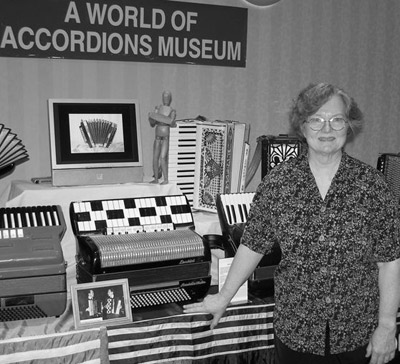
At a late-1970s AAA colloquium in Atlantic City, Carmelo's demo-lecture was on pop styles. He hoped to show that attracting young people to the accordion was not only possible but also stylistically effective. Not only could the accordion play what was conventionally heard from a pop group, but more importantly, it was musically good. I stress here--an ensemble of instruments was not necessary; he as soloist could achieve the desired effects. To do so, he used all the resources of his Titano "Emperor": free-bass and Stradella, acoustic and electronic effects. Though a staunch proponent of "fine" music, even I was persuaded. Carmelo was brilliant-eloquent and inspiring in his talk and even more so in his demonstrations. He detailed the elements of style that needed to be incorporated to produce country, rock-n-roll, jazz, blues, swing, and a host of then-current pops types. Through meticulous demos, he identified characteristic techniques that provided the tools an accordionist could learn and teach. Among them were his uniquely developed rolling bass, slider tones, stylized intersecting runs, altered rhythmic components, harmonic implications, and more. He explained everything, showed how and when effects could be used in an assortment of pieces that left me awed and spellbound. He even explained elements that could not be reproduced by the accordion and in consequence, the types of pieces that should be avoided. He made it all clear, not necessarily easy, but highly practical and compelling. I've not heard anyone before or since offer comparably intelligent, significant and useful analyses. After the program I walked over to express my respect for his presentation. I said some carefully chosen words of admiration and acknowledgement and hoped he might have some program notes that I could take along. Probably still in the aura of his work, he responded offhandedly with something like "Oh, you're so sweet." Some twenty years later at an AAA festival Carmelo called me over to introduce me to someone, saying he had stories to tell about our first meeting. Then followed the long-overwritten details: I had "ruffled" myself up, he observed, and replied "I'm not sweet. It's the truth." He was right--I had felt humored. Today I grimace at my insecurity, but I was young then, still sensitive as a female Ph.D. (musicology), and had experienced being treated seriously as scholar and artist by some, but with condescension by others. With somewhat sheepish expression, he relayed that he reflected on the exchange many times and came to understand that simple comments could be interpreted as gender bias. That changed his life, he said. We chatted in a hallway for only a few minutes-I had to run to play with my group on the continuous music stage that was an attraction that year. But those few moments endeared him to me and enhanced my respect for him by orders of magnitude. Who would need somehow to make reparation for such a minor long-ago evaporated event but a man of largess and humility? I honor Carmelo's kindness, introspection, and greatness--not only as an artist and composer of highest caliber, but also his greatness of soul. In being so strong a model, he changed my life too. Dr. Helmi Harrington PICTURE 16: Carmelo with Joan Grauman, 2005 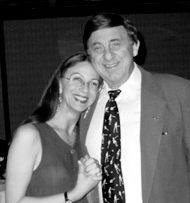
It has been a total joy for me to share these stories and to "sing the praises" of my dear friend, Dr. Carmelo Pino. I would like to conclude with the words of another dear friend, Faithe Deffner, who submitted her contribution as I was completing this article. While there is some overlap of information, I have decided to use Faithe's beautifully written piece in its entirety. PICTURE 17: Faithe Deffner with Carmelo at Coupe Mondiale 2007 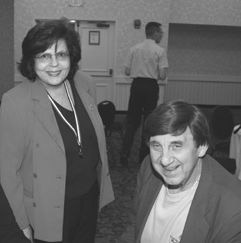
A Renaissance Man Wielding a 20th Century Accordion He is a gentleman and a scholar. He is an accordionist of charismatic virtuosity who has also distinguished himself as an innovative composer. He is Carmelo Pino - a Renaissance man wielding a 20th century accordion. I met him more than 50 years ago when he visited my late husband, Ernest Deffner, at our Titano factory workshop on Fourth Avenue in New York's Greenwich Village. His teacher and mentor, the iconic Joseph Biviano, referred Carmelo to us. (We had become very friendly with Joe and his wife Glenna who lived in a co-op across the street from our apartment on Ninth Street in the Village.) Carmelo was an impressive young man in those days. A man with a quest, he was searching for an accordion to augment his carefully honed and meticulous playing style. He was grounded by a solid music education which set him apart from many other accordionists of the day. He was certain to make a name for himself. We got to know each other better when he became president of the Accordion Association of Metropolitan Washington, which allowed him a seat on the American Accordionists' Association board, of which I was a member. (The AAA bylaws conveyed board membership to the presidents of affiliated accordion organizations during their term in office.) As always, I was impressed by his modest, erudite style. In subsequent years, Carmelo became an official board member of the American Accordionists' Association and served as vice president several times and as president from 2001 to 2004. He was a much sought after concert performer at AAA events and he often served the organization as its master of ceremonies. Carmelo Pino received his B.A. from Columbia University with honors in music, and his Master and Doctor of Musical Arts degrees from Catholic University. He did undergraduate work with noted composer Otto Luening, which led to his composition Sonata No. 1 for accordion, which O. Pagani published under the title Sonata Moderne. When the American Accordionists' Association sponsored a composition competition in 1964, Carmelo Pino took top honors with his Concertino for Accordion and Strings. The work was performed by accordionist Robert Davine with the Denver Symphony and other noted orchestras. Davine's recording is available on Crystal Records (CD 160). Carmelo's solo transcription of Concertino was later published by Pagani as Suite for Accordion, in both a stradella and a free bass version, and was selected as the test piece for the 1969 Coupe Mondiale. Carmelo was an early exponent of free bass as an extension of the accordion's unique capabilities and he mastered this system and used it frequently in performance. In 1996, Pino appeared as composer soloist with the Washington Chamber Symphony performing his Concertino in four concerts at the Kennedy Center in Washington, DC. In 1997, Fernand and Gaby LaCroix, the venerated organizers of the Grand Prix International de L'Accordeon in France, selected Carmelo's work for their international competition and the Ensemble Instrumental de Strasbourg featured it in two performances. Over the years he composed several acclaimed works, most of which are literature for accordion. Additionally, Pino has made a name for himself in commercial music performance, such as feature and documentary films, touring companies of Broadway shows, network television, jingles, commercials and numerous White House appearances. As a concert accordionist, he has been heard with the National Symphony Orchestra, under the batons of Antal Dorati, Julius Rudel, Gunther Schuller, David Del Tredici, Murray Sidlin, Christian Badea, Paul Hill, Leone Magiera, Kay George Roberts and others. His accordion embellished performances of the operas Vanessa, Natalia Petrovna, Mahagonny and Fedora. His many credits include accompanying The Three Tenors, Luciano Pavarotti, Placido Domingo and Jose Carreras. Dr. Pino performed the Concertino with the National Symphony Orchestra in eight concerts at the Kennedy Center. In a program called Keyboard Kaleidoscope, it was presented as part of the National Symphony Orchestra Young People's Concert, in a feature designed to introduce students to various keyboard instruments, among which was the accordion which Carmelo demonstrated admirably to the delight of the attendees. In commenting on Dr. Pino's association with the Washington Chamber Symphony, Stephen Simon, the orchestra's music director, has stated that he considers Carmelo "the consummate cross-over artist - classically trained, musically sophisticated and replete with repertoire, from opera to pops." Maestro Simon cites the Concertino for Accordion and Strings as a "fine example of worthy American contemporary composition." Faithe Deffner |
| Alzheimer's! The mere mention
of the word conjures up hopelessness and despair. If you have a parent,
family member or friend who has been diagnosed with Alzheimer'ss Disease,
you need to develop one thing….Patience! An individual who has been diagnosed with Alzheimer's has no control over the fact that they may repeat things over and over, forget who you are or worse, get lost when they venture out on their own. Although the disease was described in 1906 by German physician, Alois Alzheimer, there is still much to learn about the disease, how to cope with the Alzheimer patient and what medications might be helpful. In 1986, my dad was diagnosed with Alzheimer's. There were no known treatments at that time, nor was there any way to diagnose the condition until the patient passed and a brain autopsy was performed. When my dad left us in 1987, it was not because of Alzheimer's but other complications. I did consent to a brain autopsy at that time to assist in the research. He did not have Alzheimer's, but he did have dementia brought on by depression due to the loss of a spouse and a debilitating injury which curtailed his activity to do what he liked best - work. Whatever the reasons, Alzheimer'ss or any form of dementia is difficult for any of us to comprehend and the stress for the caregiver is unimaginable. To see a vibrant man like Carmelo reduced to living in a care facility, dependent on others for his day-to-day care, is heartbreaking. I miss the man who was Carmelo Pino, friend, artist, teacher, composer. Linda Soley Reed, AAA President |